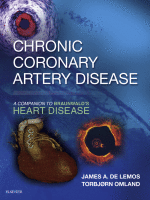Physical Address
304 North Cardinal St.
Dorchester Center, MA 02124

Introduction The Context Medical therapy of stable angina aims to address the key factor mediating myocardial ischemia: oxygen supply/demand imbalance. Pain is not the only symptom that a patient with myocardial ischemia may experience; there may also be severe fatigue,…

Introduction After smoking, obesity is probably the second leading cause of preventable death in the United States and most of the westernized world. The estimated prevalence of obesity is almost 80 million, with close to 130 million in the United…

More than 90% of all cardiovascular disease (CVD) deaths are thought to be preventable through lifestyle changes. In the INTERHEART study, a case-control study of myocardial infarction (MI) in 52 countries worldwide, nine lifestyle-related risk factors accounted for 90% of…

Introduction This chapter is focused on tools for risk assessment in patients with stable coronary heart disease. In general, patients with stable ischemic heart disease have a good prognosis. However, these data summarize the population average, and the clinician is…

By its definition, chronic stable coronary artery disease (CAD) refers predominantly to patients who have a prior history of or current demonstrable obstructive atherosclerotic disease of the epicardial coronary arteries and who are either asymptomatic, or have stable symptoms, with…

The Challenge of Noninvasive Test Selection for Stable Chest Pain The prevalence of angina is high in the general population and increases with age in both sexes, from approximately 3% to 4% in patients aged 40–59 years to 10% to…

When noninvasive testing for coronary artery disease (CAD) is inconclusive or suggests significant pathology, invasive testing is necessary. X-ray coronary angiography provides an overview of the coronary circulation and in particular helps to identify obstructive epicardial CAD. However, the coronary…

Introduction There are multiple aspects of imaging in the context of coronary artery disease. On the one hand, imaging is used to identify the presence of coronary artery stenoses, through two possible approaches. One approach is to visualize ischemia as…

Fundamentals of Radionuclide Imaging Radionuclide imaging techniques are widely used in the evaluation of patients with known or suspected coronary artery disease (CAD). The basic principle underlying this approach is the use of radiolabeled agents or radiopharmaceuticals that are injected…

Introduction Over many decades, echocardiography has evolved considerably to provide a comprehensive assessment of cardiac structure and function in a truly bedside manner. Echocardiography is a readily available technique that is portable, inexpensive, and free from radiation. Echocardiographic imaging modalities…